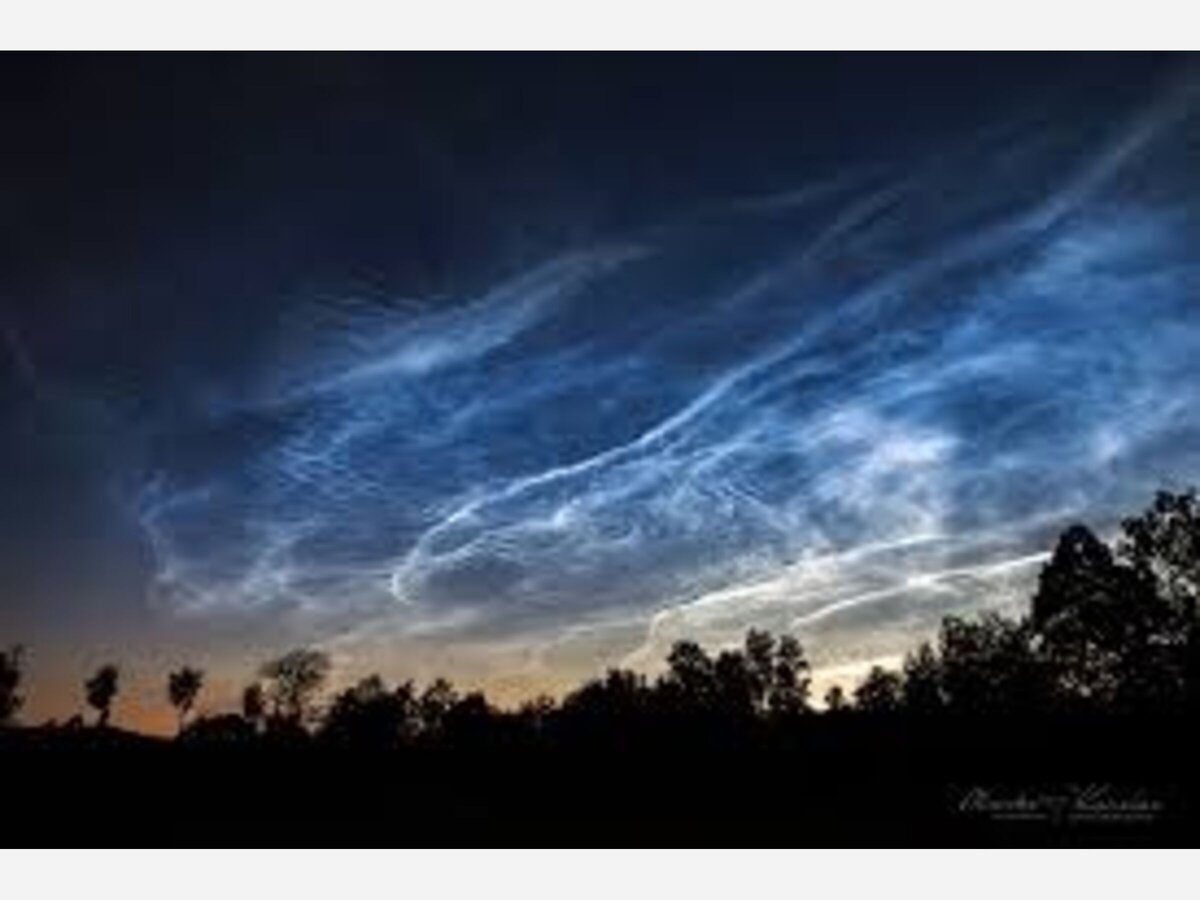Image

Are the presence of noctilucent clouds predictive of a climate crisis?
Up there, high in our atmosphere, we have the mesosphere. There one can find the beautiful noctilucent clouds. But are these clouds ones to appreciate the beauty of, or a masked beast that predicts concerning climate changes? Noctilucent clouds are quite special as they need three things to be present: an increase in water vapour, very cold temperatures and dust debris or particles on which the water vapour can freeze, such as leftover dust from meteors (and sometimes particles left over from satellite or rocket launches).
Every year from sometime in May through August here in the Northern Hemisphere, we can see these beautiful, shiny, blue clouds that shimmer brightly at night.
Spaceweather.com reports that there are many sightings of these clouds right now. In U.S., Canada and in the U.K. and Europe.
But for some reason we are seeing more of them and much earlier. There are several theories as to why. These clouds used to be too far away and too faint to see with the naked eye. But as Earth warms, there is more water vapour present in the atmosphere, allowing them to become brighter. Some say man-made climate crisis plays a huge part in our being able to see these shinning clouds up closer now.
These clouds are of keen interest, as they are reactive to both global climate change and to solar and terrestrial changes.
Some argue that much, not all, of the carbon dioxide, methane, and cholorofluorocarbons are man-made waste from our polluting industries that hold the blame for global climate crisis. The presence of chlorofluorocarbons (CFCs) in the lower atmosphere harms the ozone layer, (You know, the layer that keeps us safe from harmful rays of the sun?), causing the stratosphere to shrink, and this makes mesosphere colder. Noctilucent clouds thrive in the cold, but usually the colder atmosphere is too high up for us to see these clouds. So if we see more noctilucent clouds, colder temperatures and/or increased concentrations of water vapor must exist in the mesosphere, which may be caused by climate changes on earth and their visibility is creating attention among climate watchers.
However, another reason why they are easier to see may be the sun. The sun goes through an 11-year cycle, with solar activity — such as sunspots — waxing and waning. The past few cycles have been less active. When the sun isn't as active, our mesosphere cools down. When we have increased water vapour and the cooling of the mesosphere, it may make conditions perfect to the noctilucent clouds to form.
The blue color comes from when the light from the sun reaches the cloud, then that light goes through, then passes through the ozone layer, (which actually absorbs other light), but it allows the blue light to pass on through.
So are these beautiful shinny clouds present just after sunset a sign of climate doom, or just a natural non-nefarious occurrence that we simply just get to enjoy in our night sky?
Want to see these beauties for yourself? Just go outside about 30 minutes after sunset and look westward. You may just see luminous clouds with bluish-white tails spreading across the sky.